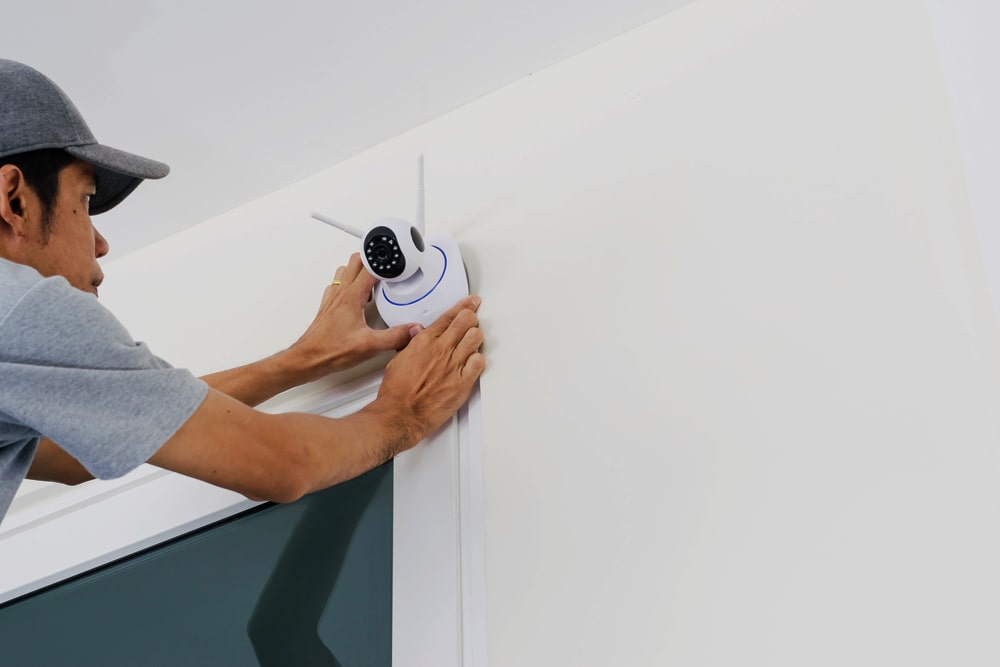IP cameras are one of the latest in terms of connected home devices. Not only do they offer higher video quality than analog cameras, but they also provide better zoom-in capabilities. But since these types of cameras require a Wi-FI connection, you may want to pay attention to how fast your internet speed is. A stable internet connection is crucial for IP cameras to work consistently so in this article, we’ll be taking a look at how fast your internet should be for a trouble-free operation.
Checking your internet speed
Before you invest in wireless security devices, you should already have a reliable internet connection in place. The speed of your internet is a relatively simple concept as it’s about how fast it transfers data between one or multiple points. The three things you should check for with your internet speed are:
- Stability
- Upload speed
- Download speed
Keep in mind that the more IP cameras you will install, the more your internet’s speed will be affected. Thankfully, checking your internet speed is relatively easy. You just have to visit a website that allows you to test your speed directly from your browser (speedtest.net is one example).
Reading the test results
As you complete the speed test from your browser, the results may not always indicate the actual speed your internet service provider (ISP) provides. This is because the website measures real-time connection and the numbers may vary depending on network congestion and bandwidth availability.
When it comes to IP cameras, you generally want a good upload speed of more than 1 Mbps. Upload refers to how many megabits of data per second is sent from your network’s location to another. Download speed, on the other hand, refers to how fast you receive data at your location. You want your internet’s download speed to be at least 2.5 Mbps and up to comfortably view the footage from your device.
Bandwidth requirements
There are a couple of factors to consider when calculating the internet speed/bandwidth requirements for your IP cameras. These factors are:
- Video Recording Resolution
- Video Compression / Codec Used
- Number of Cameras
- FPS (Frame Rate per Second)
You will have to account for all of the items above to calculate the bandwidth requirements of an IP camera system. Keep in mind that even if you are recording locally, you’ll need to consider these items when planning your local network. But if you don’t plan on using that many cameras and you don’t plan on recording high-resolution video, then your bandwidth requirements will be more minimal.
However, once you install more than one IP camera and you want high resolution, high frame rate recordings, the required Internet connection speed requirements increase significantly. In many cases, it is not ideal to rely on a standard DSL or cable modem-type of Internet connection to support multiple IP cameras.
For example, if you are recording two IP cameras using MPEG-4 video compression, with a screen resolution of 640 x 480 pixels at a frame rate of 7.5 fps (1/4 real-time video), you will need approximately 650Kbps of bandwidth. This means that on the network where your camera is located, the Internet connection must have a minimum upload speed of at least 650Kbps and the Internet connection where your remote DVR/NVR is located must have a minimum download speed of 650Kbps.
Do note that minimum bandwidth requirements refer to the least amount of network capacity needed to support IP cameras. To guarantee a stable connection and a good remote viewing quality, it’s best to reserve at least 40% bandwidth. You can contact your ISP (Internet Service Provider) and inquire for faster speeds within your area to meet the minimum bandwidth requirements.
You’ll find plenty of bandwidth calculators online which will give a rough estimate of your bandwidth requirements based on the number of IP cameras you have, the video compression you’re using, and the frame rates at which you’re recording at.
Dead spots and weak zones in your Wi-Fi
One thing you will want to check around your home is the potential dead spots and weak zones in your Wi-Fi. Thankfully, this is quite easy to check with a smartphone or other device. The first thing to do is to connect the device to the wireless network. Then walk around the home, paying close attention to the Wi-Fi signal in your device. If the signal weakens or drops to zero, then it’s a dead spot in your Wi-FI. Avoid placing your cameras near these areas for trouble-free operation.

If you have plenty of dead Wi-Fi spots around your home, you may want to consider moving the location of your router to an area in your home with less physical barriers (walls, large furniture, etc.). Alternatively, you can also use a Wi-Fi signal booster to extend your network’s coverage.
And that’s about it on our take on internet speeds regarding IP cameras. If you’re unsure about your bandwidth requirements, it’s best to contact a professional to help you determine the appropriate internet speeds to fully support your IP camera system.

